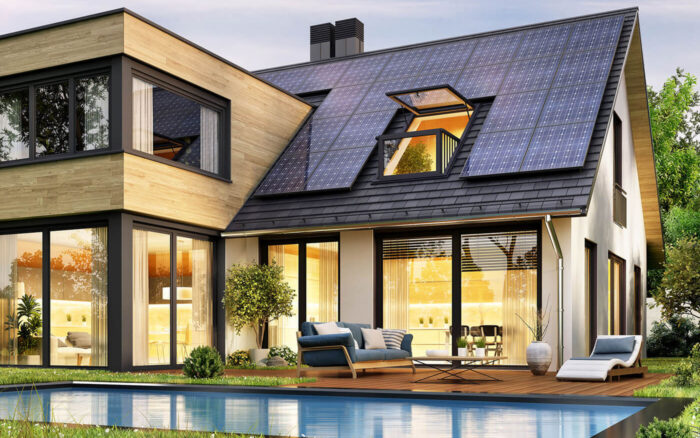In an era of increasing environmental awareness, more homeowners are seeking ways to reduce their ecological footprint. One of the most impactful ways to do this is through eco-friendly home renovation. Whether you’re updating a single room or planning a whole-house remodel, incorporating sustainable materials, energy-efficient systems, and green design principles can save money, protect the environment, and create a healthier living space.
Eco-friendly renovations aren’t just a trend—they’re a long-term investment in your home and the planet. Here’s how to make your next renovation project sustainable, practical, and stylish.
1. Start with Energy Efficiency
Reducing energy consumption is a cornerstone of green home renovation. Begin by identifying areas in your home where energy is being wasted.
Key Upgrades:
- Insulation: Properly insulating your walls, attic, and floors reduces the need for heating and cooling, cutting down on energy bills.
- Windows and Doors: Upgrade to double- or triple-glazed windows and energy-efficient doors to eliminate drafts and retain heat.
- LED Lighting: Replace old incandescent bulbs with energy-saving LED options that last longer and use less electricity.
- Energy-Efficient Appliances: When replacing appliances, look for the ENERGY STAR® label to ensure optimal efficiency.
Making your home more energy-efficient not only reduces utility costs but also significantly lowers greenhouse gas emissions.
2. Choose Sustainable Materials
Selecting eco-conscious building materials is another essential step. Choose materials that are recycled, reclaimed, renewable, or responsibly sourced.
Examples of Sustainable Materials:
- Bamboo flooring: A fast-growing, renewable alternative to hardwood.
- Reclaimed wood: Adds character while reducing the demand for new lumber.
- Recycled metal or glass: Great for countertops and tiles.
- Low-VOC paints and sealants: Minimize indoor air pollution and health risks.
Whenever possible, choose locally sourced materials to reduce the environmental impact of transportation.
3. Focus on Water Conservation
Water is a precious resource, and many home renovations offer the perfect opportunity to cut down on usage.
Smart Solutions:
- Low-flow toilets, faucets, and showerheads: Use significantly less water without sacrificing performance.
- Dual-flush toilets: Offer different flush options for liquid or solid waste.
- Rainwater harvesting systems: Collect and reuse rainwater for irrigation or non-potable uses.
- Drought-tolerant landscaping: Replace thirsty lawns with native plants that require less water and maintenance.
These upgrades contribute to lower water bills and a more sustainable household.
4. Consider Renewable Energy
Incorporating renewable energy into your renovation is one of the most powerful steps you can take toward sustainability.
Options Include:
- Solar Panels: Reduce dependence on fossil fuels and lower your energy bills.
- Solar Water Heaters: Use the sun’s power to heat water efficiently.
- Geothermal Systems: Leverage the earth’s natural heat for consistent, eco-friendly temperature control.
While the upfront costs of renewable energy systems can be high, they often pay for themselves over time and may qualify for tax credits or rebates.
5. Minimize Waste and Reuse When Possible
Renovation projects often generate a significant amount of waste. You can reduce landfill contributions by planning carefully and salvaging usable materials.
Waste Reduction Tips:
- Deconstruct instead of demolish: Salvage doors, cabinets, fixtures, and lumber for reuse or donation.
- Recycle construction waste: Many materials like metal, concrete, and drywall can be recycled.
- Donate old appliances: Many charities accept working appliances and fixtures.
Being mindful of disposal and waste keeps renovation costs down and benefits the environment.
6. Create a Healthier Living Space
Eco-friendly renovations don’t just help the planet—they also create healthier, more comfortable homes.
Consider:
- Natural ventilation and air filtration: Reduce reliance on air conditioning and improve indoor air quality.
- Non-toxic materials: Reduce exposure to harmful chemicals found in conventional paints, glues, and finishes.
- Natural light: Maximize daylighting through window placement and skylights, reducing the need for artificial lighting.
A green home is often a healthier home, with better air quality, lower humidity, and fewer allergens.
7. Plan with Longevity in Mind
The most sustainable renovation is one that lasts. Choose timeless designs and durable materials that won’t need to be replaced or renovated again in a few years.
- Opt for classic, neutral styles over short-lived trends.
- Invest in quality craftsmanship that stands the test of time.
- Consider flexible design elements that adapt to changing needs (like aging in place).
Long-lasting renovations reduce waste, save money, and reduce the environmental impact over the life of the home.
Conclusion: Small Changes, Big Impact
An eco-friendly home renovation doesn’t have to mean sacrificing style or comfort. With thoughtful planning, sustainable materials, and energy-smart choices, you can create a beautiful, functional home that reflects your commitment to a greener future.
Whether you’re remodeling your kitchen, upgrading your insulation, or installing solar panels, every green decision makes a difference. Start small, think long-term, and transform your home into a model of sustainability.
